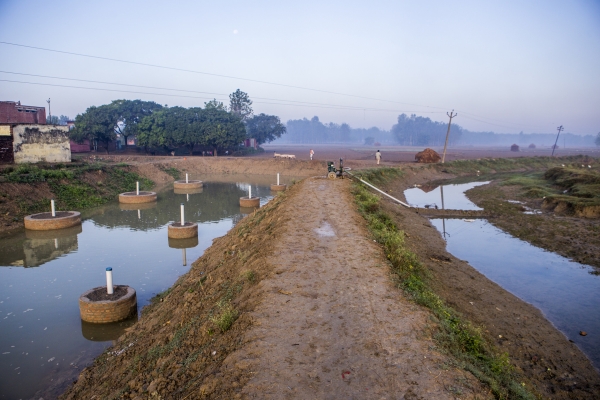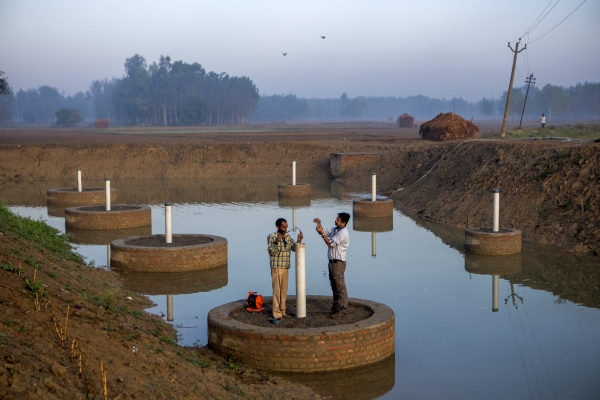
Flooding is usually seen as destructive, hampering economic growth and damaging to crops and infrastructure. Regular flooding is, however, a fact of life for many people in South Asia. What’s more, this likely to get more frequent as our climate changes.
But what if flood waters could be used more productively? If some of this excess water could be stored underground this might help mitigate the negative impacts of inundation and provide a convenient store of water for use by farmers during dry periods.
That is the principle behind a new project which has recently been launched in India called Underground Taming of Floods for Irrigation (UTFI). The project is led by researchers from the International Water Management Institute.
Farming is a tough job throughout the South Asian region which is prone to regular floods and droughts. The new UTFI (pronounced ‘utify’) approach promises dual advantages; boost in irrigational/food production potential and increased livelihoods for the upstream communities while reducing negative impacts caused by floods for the downstream communities.
How is this possible?
A recently published study on UTFI draws on the pilot project currently underway in Jiwai Jadid village (located in India) that directs monsoon floodwaters into aquifers for agricultural use and to ensure sustainable groundwater supplies during the dry season.
During the monsoon season the Ramganga River basin, where Jiwai Jadid is located, receives an abundance of rainfall which can result in severe floods. Jiwai Jadid has experienced major flooding three times in the past decade however during the dry season hardly a drop of rain falls. UTFI channels floodwater into aquifers through a process called managed aquifer recharge (MAR) and consequently stores this water underground to be used for irrigation during the dry season.
Through this process the farmers in upstream communities will benefit from higher groundwater tables and year-round access to irrigation water and farming opportunities with added profits. Additionally, this will be an effective solution in preventing downstream flooding and the downstream urban communities will be able save on the cost of damage and prevent the loss of lives.
From flooding to farming
The research team found that the community ponds are best suited features in the landscape for aquifer recharge. The team, after a detailed site selection and data analysis process, went about constructing a pilot trial by converting one of the pond into a recharge facility.
“If the right sites are chosen and the institutional arrangements to ensure farmer participation are set in place, then UTFI can be used through much of the flood-prone regions of Asia that are home to millions of poor farmers and their families” says Paul Pavelic, leading researcher of the study.
Using the additional groundwater harnessed by UTFI interventions, groundwater depletion can be reversed, and farmers can expand on growing more staples or food security crops on their lands and generate higher incomes.

The researchers found that there was a clear increase in the number of harvesting times with just one additional irrigation application. Through the wider adoption and broad-scale implantation of UTFI, they estimate that farmers will be able to benefit from higher revenues with the increased number of harvests within the year.
“The returns are quite high, even if only the benefits to farmers and local agriculture communities are considered. Farmers will even be able to reap higher revenues. But we require more detailed field data for a more robust economic analysis. We are however optimistic on where our research is heading” adds Paul.
The UTFI interventions will not only help in flood control but will also help make farming into a more stable means of livelihood. With greater agriculture production gains and increased incomes UTFI will help poor farmers to come out of poverty. Apart from the financial benefits, farmers can rest-assured with the readily available water for irrigation throughout the year, and most importantly during the dry season or times of drought.
Government agencies and policy makers should consider the application of UTFI across flood prone countries in Asia as a way of tackling floods and a smart and effective investment in disaster risk reduction. It will in return improve the lives of farmers as well as the agricultural economy of the country.
Read the full research report: Controlling floods and drought through underground storage: From the concept to pilot implementation in the Ganges River Basin
For more information please visit the UTFI web site at http://utfi.iwmi.org/

